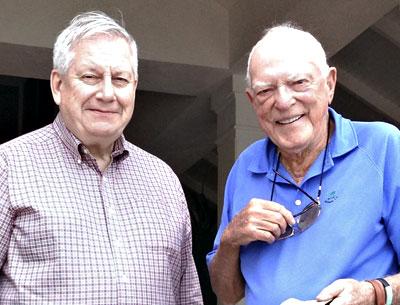On the Road Less Traveled
On the Road Less Traveled
After I dropped off my daughter, Elizabeth, at L.I.U. Post Monday morning, my right turn south on Route 107 was brutally interrupted by a weaving asphalt truck, eerily similar to one that cut me off in front of the now-defunct Highway Diner, so to avoid an almost certain obituary and bumper-to-bumper traffic past Ikea, Sears, and Theresa (“Long Island Medium”) Caputo’s house, I split-second decided to take the road less traveled and stayed the course east along Northern Boulevard for a lazy ride back to Springs along Route 25A, a road I haven’t traveled in 25 years.
Certainly the drive on 495 would have shaved an hour off my trip, but I felt a sense of nostalgia along 25A, back to a time when I courted my wife all those years ago, stopping in shops on Main Street in Cold Spring and Huntington Harbor, holding hands, sipping cappuccino, her laughing at my jokes — all evaporating like a rainbow over Maidstone Beach.
The drive through Laurel Hollow was quite pleasant, a long winding road not unlike Cedar Street, sans the mile-high, bark-like utility poles, but then came our old haunt, Main Street, Cold Spring Harbor, and the connected shoebox-size, pastel-colored shops I remember oh so well. The memories of my wife and me together, before four kids, rushed through me like an effervescent explosion of oxygen, perking me up quickly. I was expecting the fragrance of her Giorgio perfume to awake me like the ammonium carbonate my football coach pushed under my nose so many times when I got slammed in Astoria Park, but alas, no Giorgio, no smelling salts, just the pleasing aroma of fresh-baked bread and cherry blossoms in bloom.
Surprisingly, I found a spot in front of the Gourmet Whaler, a place I remember as Gourmet Delights for its croissants and aromatic sweet coffee, all reminiscent of an English Tea Shoppe on Front Street in Bermuda, and so I parked across the street in a toll-free lot, strolled inside, and struck up a conversation with the striking, blond-haired, green-eyed Connie Stevens look-alike owner, who introduced herself as Connie, coincidentally having grown up a few blocks from me in Queens.
“A small world,” I said as I dropped $2 on the counter for a cup of freshly brewed Hazelnut international coffee.
“That one’s on me,” Connie said as her green eyes twinkled like a Hollywood special effect.
“Thanks, but next time,” I said as I left the cash on the counter and returned to the summer of ’87.
Time stood still as I strolled ever so lazily along Main Street, sipping my coffee through an imperfectly torn white plastic coffee lid, finding myself magically within a Billy Joel tune, happy, content, at peace.
I was so thankful to stumble upon such wonderful moments, smiling at passers-by, chatting with people I didn’t know and might never see again, blessed to avoid the highway traffic and rediscover a part of Long Island perhaps not granted to many.
Leaving Cold Spring Harbor, I needn’t play my daughter’s Katy Perry CD, or should I admit my Katy Perry CD, my euphoria from a trip back in time was stimulating enough for the ride home. But then suddenly, like a spin through the old “Time Tunnel” TV series, all that changed when I drove through Selden and Coram and saw endless “For Rent” signs, vacant stores, blocks and blocks of blighted empty buildings, images you might see in Midwest ghost towns or nuclear blast test zones, but here on Long Island in areas where I never expected to see such hopelessness, so many lost jobs, so many ruined families, so much sadness, perhaps results of the encroachment of huge box stores. My neck still hurts from twisting side to side, scanning the heartache.
Upon my return home, I read with angst a story about allowing large formula stores to invade our community, a community much like Cold Spring Harbor, with history, with character, with so much life, free of the compassionless highway mind-set.
I realized had I not taken Route 25A, I would’ve been like thousands of others on 495, hurried to close another deal, sell another product, paint another wall, catch a rerun of “Family Feud,” but rather found solitude along a simple two-lane street with bushy pink trees among simple stores free of websites and web designers, stores that survive on people like me making a deliberate turn down a road ancient to some but the road of choice to many.
Perhaps our future, perhaps our demise, lies in huge orange hardware stores, or a red bull’s-eye logo, or a massive block-long blue W discounter, but as for me, my wrong turn down the road less traveled reminded me I prefer simple pastel-colored shoebox stores on two-lane roads lined with bushy pink trees.
Frank Vespe is a regular “Guestwords” contributor.



